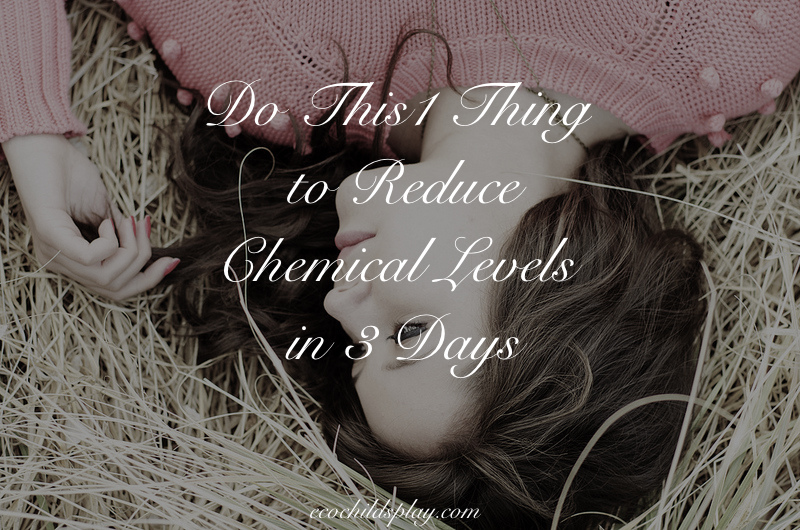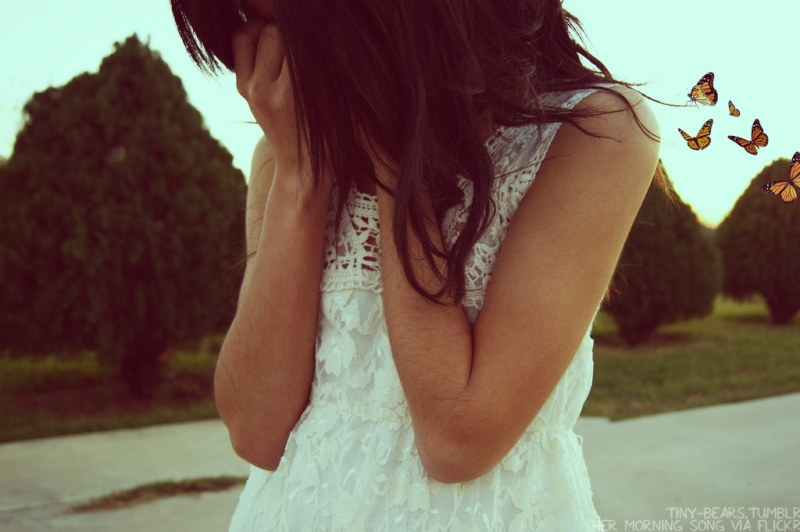There are very few actions you can take to improve your health in just three days. It takes some time to see the effects of healthy eating and exercise as our bodies slowly shift into strength and vibrancy. New research has found there is one thing you can do to reduce your chemical levels in only a few days!
Photo credit: Nhoj Leunamme == Jhon Emmanuel via Foter.com / CC BY-NC-ND
Researchers in California asked 100 Latino teenage girls to stop using their personal care products and switch to safer products. The safer products did not contain known hormone-disrupting chemicals. Chemical levels in cosmetics varies, but most commercial products contain potential toxins.
Toxic Hormone Disruptors
Phthalates, parabens, and triclosan are endocrine disruptors. Endocrine disruptors interfere with our natural hormone system. This disruption can cause problems in development and reproduction. These chemicals also adverse neurological and immunity effects on all mammals. ((http://www.niehs.nih.gov/health/topics/agents/endocrine/))
By avoiding personal care products with these chemicals found in shampoos, lotions, toothpaste, deodorant, etc., the teenage girls saw a significant reduction of chemical levels in their urine.
The Study
The Environmental Working Group (EWG) reported on the study led by Kim Harley, Ph.D., from the Center for Environmental Research and Children’s Health at the University of California at Berkeley:
After three days, the teens’ urine tests showed these decreases in the concentrations of the cosmetics ingredients under study:
-
44 percent down in levels of methyl and propyl paraben. Parabens are preservatives widely used in cosmetics, shampoos and skin lotions.
-
35 percent down in triclosan, an antibacterial chemical common in liquid antibacterial hand soap, dishwashing detergent, toothpaste, face wash and deodorant. Triclosan has been linked to the disruption of thyroid and reproductive hormones.
-
27 percent down in mono-ethyl phthalates. Phthalates, common industrial plasticizers, show up in some nail polish and fragrances. ((http://www.ewg.org/enviroblog/2016/03/potentially-toxic-chemicals-plummet-teens-after-switching-safer-cosmetics))
Photo credit: Kaptah via Foter.com / CC BY-NC-SA
After only 3 days, the teenage girls saw a reduction of 27-44 % in chemical levels by switching to safer personal care products!
Reducing chemical levels at any age is important, but it is especially significant for children. KQED explains:
Harley said there’s “a lot we don’t know yet” about the effects of these chemicals in the human body, but some human research shows “they are associated with neurodevelopment problems in children, respiratory problems like asthma in children and obesity problems.”
The reason the study was done on teenage girls is because they tend to use more personal care products than adult women and because adolescence may be a time of particular risk.
“Adolescence is a time of rapid growth and development,” Harley said. “It’s physical growth, reproductive development, brain development, all happening in adolescence.”
There is no identified safe level of the four chemicals, Harley said.((http://ww2.kqed.org/stateofhealth/2016/03/07/big-drop-in-chemical-levels-in-girls-who-switched-cosmetics/))
Women use more personal care products than men. One study found that on average an adult woman uses 12 products a day. A teenage girl uses 17.((http://ehp.niehs.nih.gov/wp-content/uploads/advpub/2016/3/ehp.1510514.acco.pdf))
Photo credit: .bravelittlebird via Foter.com / CC BY-NC-ND
Empowering Teens
What is also significant about this study is that the 100 Latino girls came from low-income families. One can assume they were using inexpensive products. In general, the cheaper the personal care product, the higher the chemical levels. It’s another example where minority and low socioeconomic status puts one at risk for higher toxic exposure. For example, low-income neighborhoods are usually located near toxic factories.
What I really love about this study was it was designed to empower Latino teenage girls. Girls were involved in the study design, recruitment, and co-authors. According to Environmental Health Perspectives, the journal that published the study:
The Health and Environmental Research on Makeup of Salinas Adolescents (HERMOSA) Study was a youth empowerment intervention study examining strategies to reduce personal care product chemical exposure to adolescent girls. HERMOSA means “beautiful” in Spanish, reflecting the study’s focus on Latina teens. The study was designed in collaboration with fifteen local high school students (including three of the authors: MC, IV, GM) participating in the CHAMACOS Youth Council (Madrigal et al. 2014) who were hired as youth researchers and were involved in all aspects of the study, including study design, questionnaire development, identifying low-chemical replacement products, recruiting participants, collecting data, and returning results to the community.((http://ehp.niehs.nih.gov/wp-content/uploads/advpub/2016/3/ehp.1510514.acco.pdf))
Not only did the girls experience reduced chemical levels after only three days, their attitudes and knowledge changed:
Most girls stated that they had learned something new about chemicals in cosmetics because of the study (66%) and that they would buy products without phthalates, parabens, triclosan, or BP-3/oxybenzone (71%) (Table 4). At the post-intervention visit, 23% of girls reported that they had checked the ingredients of their regular products for these chemicals. Participants seemed to enjoy being in the study. Several girls stated that they appreciated learning about chemical exposures in personal care products and being taught methods for reducing their exposure.((http://ehp.niehs.nih.gov/wp-content/uploads/advpub/2016/3/ehp.1510514.acco.pdf))
FDA Failure
In light of the FDA’s inability to regulate cosmetics, community education programs like this one are key. There is no “pre-market” approval for cosmetics. The FDA relies on companies to ensure their products are safe.((http://ww2.kqed.org/stateofhealth/2016/03/07/big-drop-in-chemical-levels-in-girls-who-switched-cosmetics/)) The Feinstein-Collins Personal Care Products Safety Act would change that. It would give the FDA authority to recall toxic products. The FDA would also be required to yearly investigate ingredients. Surprisingly, major industry leaders, such as Procter & Gamble and Revlon, support the bill. ((http://www.ewg.org/enviroblog/2016/03/potentially-toxic-chemicals-plummet-teens-after-switching-safer-cosmetics))
The Good News
The study’s conclusion sums it up well. Read your labels! Switch to safer personal care products to reduce your chemical levels. It only takes three days to see results:
In summary, this is the first study that we know of to show that techniques available to consumers, such as choosing personal care products that are labeled to be free of phthalates, parabens, triclosan, and oxybenzone, can significantly reduce personal exposure to these potentially endocrine-disrupting chemicals. Our study did not test for the presence of these chemicals, but simply used techniques available to the average consumer: reading labels and investigating product safety through web-based databases. Our findings suggest that consumers may be able to reduce exposures by seeking out commercially available products with lower levels of these chemicals.((http://ehp.niehs.nih.gov/wp-content/uploads/advpub/2016/3/ehp.1510514.acco.pdf))



Leave a Reply